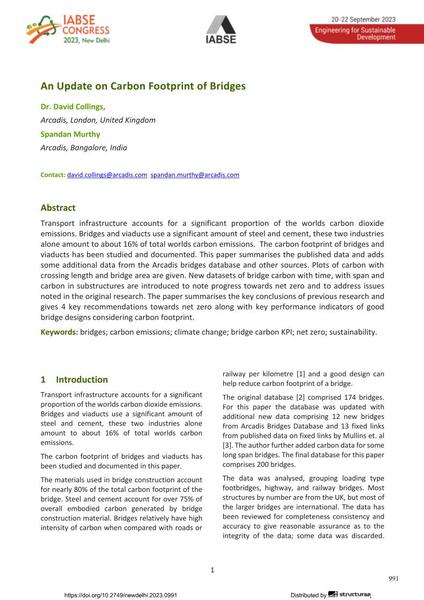An Update on Carbon Footprint of Bridges

|
|
|||||||||||
Détails bibliographiques
| Auteur(s): |
David Collings
(Arcadis, London, United Kingdom)
Spandan Murthy (Arcadis, Bangalore, India) |
||||
|---|---|---|---|---|---|
| Médium: | papier de conférence | ||||
| Langue(s): | anglais | ||||
| Conférence: | IABSE Congress: Engineering for Sustainable Development, New Delhi, India, 20-22 September 2023 | ||||
| Publié dans: | IABSE Congress New Delhi 2023 | ||||
|
|||||
| Page(s): | 991-998 | ||||
| Nombre total de pages (du PDF): | 8 | ||||
| DOI: | 10.2749/newdelhi.2023.0991 | ||||
| Abstrait: |
Transport infrastructure accounts for a significant proportion of the worlds carbon dioxide emissions. Bridges and viaducts use a significant amount of steel and cement, these two industries alone amount to about 16% of total worlds carbon emissions. The carbon footprint of bridges and viaducts has been studied and documented. This paper summarises the published data and adds some additional data from the Arcadis bridges database and other sources. Plots of carbon with crossing length and bridge area are given. New datasets of bridge carbon with time, with span and carbon in substructures are introduced to note progress towards net zero and to address issues noted in the original research. The paper summarises the key conclusions of previous research and gives 4 key recommendations towards net zero along with key performance indicators of good bridge designs considering carbon footprint. |
||||
| Mots-clé: |
ponts durabilité
|
||||
